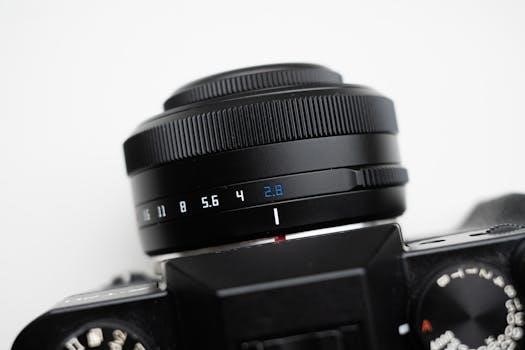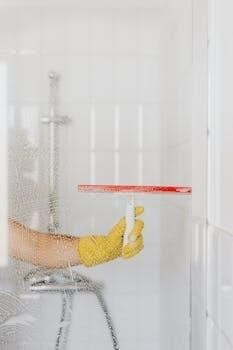Scott SCBA User Manual⁚ A Comprehensive Guide
This comprehensive guide provides essential information for the safe operation and maintenance of your Scott Self-Contained Breathing Apparatus (SCBA). It covers various Air-Pak models, including the X3 Pro, focusing on features like the Heads-Up Display and Vibralert system.
The Scott SCBA, including the Air-Pak 75 and Air-Pak X3 Pro models, is a vital piece of safety equipment designed for individuals working in hazardous atmospheres. These self-contained breathing apparatus provide a reliable source of breathable air, protecting users from harmful gases, smoke, and oxygen-deficient environments. This user manual serves as a comprehensive resource for understanding the proper operation, maintenance, and inspection procedures for Scott SCBAs.
It is crucial to familiarize yourself with the contents of this manual before using the equipment. The manual covers essential aspects such as the function of the Heads-Up Display, the Vibralert alarm, and the Rapid Intervention Crew/Company Universal Air Connection (RIC UAC) System. Understanding these features ensures users can effectively respond to emergencies and maintain their safety in critical situations.
This guide is tailored for trained operators and emphasizes adherence to safety precautions and limitations. By following the instructions outlined in this manual, users can maximize the performance and lifespan of their Scott SCBA, ensuring reliable protection when it is needed most. Always prioritize safety and continuous learning to stay proficient in using this life-saving equipment.
Understanding SCBA Models⁚ 2.2, 3.0, and 4.5
Scott offers various SCBA models, primarily differentiated by their operating pressure⁚ 2.2, 3.0, and 4.5. These numbers represent the pressure in thousands of pounds per square inch (psig) at which the cylinder is filled. The 2;2 model operates at 2216 psig, the 3.0 model at 3000 psig, and the 4.5 model at 4500 psig. Each model is identified by a distinct yellow label with black printing on the pressure reducer.
The choice of model depends on the specific needs and requirements of the user’s environment. Higher pressure models, like the 4.5, typically offer a longer air supply duration for extended operations. Understanding the differences between these models is crucial for selecting the appropriate SCBA for the task at hand.
This section provides a clear overview of each model’s specifications and performance characteristics. Proper model selection ensures optimal safety and efficiency in various working conditions. Always refer to the user manual for detailed information on each model’s capabilities and limitations to make informed decisions.
Key Components of the Scott Air-Pak SCBA
The Scott Air-Pak SCBA is a sophisticated piece of equipment comprised of several key components working in synergy to provide breathable air in hazardous environments. These components include the backframe and harness assembly, the cylinder and valve assembly, the dual path pressure reducer, and the facepiece and regulator.
The backframe and harness provide a secure and comfortable platform for carrying the SCBA. The cylinder and valve assembly stores the compressed air supply, while the dual path pressure reducer ensures a consistent flow of air to the regulator. The facepiece and regulator deliver the air to the user, maintaining positive pressure to prevent the entry of contaminants.
Understanding each component’s function is crucial for proper operation and maintenance. Regular inspection and care of these components are essential for ensuring the SCBA’s reliability and performance. Familiarizing yourself with these key elements will enhance your ability to use and maintain the Scott Air-Pak SCBA effectively, contributing to your safety in hazardous situations.
Backframe and Harness Assembly
The backframe and harness assembly of the Scott Air-Pak SCBA serves as the structural foundation, providing a secure and ergonomic platform for carrying the entire unit. The backframe is typically constructed from lightweight yet durable materials, designed to distribute the weight of the SCBA evenly across the wearer’s back, minimizing strain and maximizing comfort during extended use.
The harness system, comprising shoulder straps, a waist belt, and chest straps, is fully adjustable to accommodate a wide range of body sizes and shapes. Proper adjustment of the harness is critical for ensuring a snug and secure fit, preventing the SCBA from shifting or moving during strenuous activities. This secure fit also contributes to optimal weight distribution, reducing fatigue and enhancing maneuverability in challenging environments.
Regular inspection of the backframe and harness assembly is essential, checking for signs of wear, damage, or loose connections. Damaged or improperly adjusted components can compromise the SCBA’s stability and safety.
Cylinder and Valve Assembly
The cylinder and valve assembly is a critical component of the Scott Air-Pak SCBA, responsible for storing and delivering breathable air under pressure. The cylinder itself is typically constructed from lightweight, high-strength materials such as aluminum or composite materials, designed to withstand extreme pressures. These cylinders are available in various sizes and pressure ratings (e.g., 2.2, 3.0, and 4.5 models), determining the duration of air supply.
The cylinder valve regulates the flow of air from the cylinder to the pressure reducer. It includes a handwheel for opening and closing the valve, as well as a pressure gauge indicating the remaining air pressure. The gauge is crucial for monitoring air supply during use.
Regular inspection of the cylinder and valve assembly is paramount. Check the cylinder for any signs of damage, such as dents, cracks, or corrosion. Verify the pressure gauge’s accuracy and ensure the valve operates smoothly. Hydrostatic testing of the cylinder is required periodically to ensure its structural integrity. Proper handling and storage of the cylinder are essential to prevent damage and maintain its functionality.
Dual Path Pressure Reducer
The dual path pressure reducer is a vital safety feature within the Scott Air-Pak SCBA, responsible for reducing the high-pressure air from the cylinder to a usable, lower pressure suitable for breathing. This component ensures a consistent and reliable airflow to the facepiece regulator, maintaining positive pressure within the mask. The “dual path” design incorporates a primary and a secondary regulator.
In the event of a failure in the primary regulator, the secondary regulator automatically activates, providing an uninterrupted air supply. This redundancy is critical for ensuring the user’s safety in hazardous environments. The pressure reducer is typically mounted on the backframe for protection and accessibility. Its function is to automatically switch to the secondary path, providing continuous airflow without manual intervention.
Regular inspection of the pressure reducer involves checking for any signs of damage or leaks. Listen for unusual noises or hissing sounds that may indicate a malfunction. Ensure that both the primary and secondary regulators are functioning correctly during routine SCBA checks. Any issues with the pressure reducer should be addressed immediately by qualified personnel to maintain the SCBA’s reliability.
Facepiece and Regulator
The facepiece and regulator are critical components of the Scott SCBA, working together to deliver breathable air to the user while providing a secure and sealed fit. The facepiece, typically a full-face design, creates an airtight barrier between the user’s face and the surrounding atmosphere. It is secured with a head harness, ensuring a snug and comfortable fit, crucial for maintaining positive pressure within the mask.
The regulator, mounted directly on the facepiece, controls the airflow based on the user’s breathing demand. It maintains positive pressure, preventing contaminants from entering the mask even if the seal is compromised. Many Scott SCBA models feature a mask-mounted regulator with an air-saver switch, which conserves air when the regulator is not in use; The regulator is designed for easy removal and attachment, facilitating cleaning and maintenance;
Regular inspection of the facepiece involves checking for cracks, tears, or deterioration of the lens and face seal. The regulator should be inspected for proper function, ensuring smooth airflow and responsive operation. Cleaning the facepiece and regulator after each use is essential to prevent the buildup of contaminants and maintain hygiene. Proper fit and function are vital for the SCBA’s effectiveness.
Operating Instructions for Scott SCBA
Operating a Scott SCBA requires thorough understanding and adherence to safety protocols. Before each use, inspect the entire unit, checking for any signs of damage or malfunction. Ensure the cylinder is fully charged and properly connected. Don the SCBA by first loosening all straps, then positioning the backframe comfortably on your back. Secure the waist belt and shoulder straps, adjusting them for a snug yet comfortable fit.
Next, don the facepiece, ensuring a tight seal against your face. Adjust the head harness for optimal comfort and security. Activate the air cylinder valve and listen for the flow of air into the mask. Check the pressure gauge to confirm adequate air supply. Prior to entering any hazardous environment, test the SCBA in a clean air environment to ensure proper function and a secure seal.

During operation, monitor the pressure gauge regularly to track air consumption. Be aware of your surroundings and maintain situational awareness. In the event of an alarm, immediately assess the situation and follow established emergency procedures. Upon exiting the hazardous environment, decontaminate the SCBA and perform a thorough inspection before storage. Always refer to the user manual for specific instructions and safety guidelines related to your particular SCBA model.

Maintenance Procedures for Scott SCBA
Proper maintenance is crucial for ensuring the reliability and longevity of your Scott SCBA. Regular cleaning is essential to remove dirt, debris, and contaminants that can compromise performance. After each use, wipe down the entire unit with a mild detergent and water solution, paying close attention to the facepiece, regulator, and cylinder valve. Rinse thoroughly with clean water and allow to air dry completely.
Inspect all components for wear and tear, including hoses, straps, buckles, and seals. Replace any damaged or worn parts immediately. Lubricate moving parts, such as the cylinder valve and regulator components, with approved lubricants as recommended by the manufacturer. Periodically check the cylinder pressure and have it hydrostatically tested according to regulatory requirements.
Store the SCBA in a clean, dry, and well-ventilated area, away from direct sunlight and extreme temperatures. Protect the facepiece from scratches and damage by storing it in a protective case. Keep detailed maintenance records, including dates of inspections, repairs, and replacements. Follow the manufacturer’s recommendations for specific maintenance schedules and procedures. Only trained and qualified personnel should perform maintenance on SCBA equipment. Regular maintenance ensures that your SCBA is always ready for use in emergency situations.
Inspection and Cleaning of the Air-Pak X3 Pro SCBA
Maintaining the Air-Pak X3 Pro SCBA involves rigorous inspection and cleaning to ensure optimal performance and safety. Before each use, meticulously inspect all components, including the facepiece, harness, cylinder, and regulator. Check for signs of damage, wear, or contamination. Verify that all connections are secure and that the cylinder is adequately filled. Pay close attention to the HUD (Heads-Up Display) for proper functionality and battery life.
After each use, thoroughly clean the Air-Pak X3 Pro SCBA to remove dirt, debris, and potentially hazardous materials. Disassemble the facepiece and wash it with mild soap and water, ensuring all surfaces are cleaned and disinfected. Rinse thoroughly with clean water and allow to air dry completely. Wipe down the harness, cylinder, and regulator with a damp cloth, paying attention to crevices and hard-to-reach areas.
Inspect the regulator for proper operation and ensure that all valves and controls move freely. Replace any worn or damaged parts immediately. Follow the manufacturer’s instructions for specific cleaning agents and procedures. Store the Air-Pak X3 Pro SCBA in a clean, dry, and well-ventilated area, away from direct sunlight and extreme temperatures. Regular inspection and cleaning are essential for maintaining the integrity and reliability of your Air-Pak X3 Pro SCBA.
Safety Precautions and Limitations
Using a Scott SCBA demands strict adherence to safety precautions. Always ensure proper training before operating the equipment. Verify a tight facepiece seal to prevent contaminant inhalation. Monitor air supply levels constantly via the Heads-Up Display (HUD). Be aware of the SCBA’s limitations, including air supply duration, which varies based on exertion levels. Never enter Immediately Dangerous to Life or Health (IDLH) environments without a fully functional SCBA and backup.
SCBAs are designed for respiratory protection only and do not protect against skin absorption of hazardous materials. In situations involving chemical exposure, wear appropriate protective clothing. Be mindful of the SCBA’s weight, which can impact mobility and stamina. Use caution in confined spaces to avoid entanglement. Regularly inspect the SCBA for damage before each use.
Avoid using the SCBA in explosive atmospheres unless certified for such use. If the Vibralert alarm activates, immediately evacuate the hazardous area. SCBAs are not suitable for underwater use unless specifically designed for that purpose. Always adhere to the manufacturer’s guidelines and local regulations. Understanding and respecting these safety precautions and limitations are crucial for safe and effective SCBA operation. Failure to do so can result in serious injury or death.

Troubleshooting Common Issues
Even with proper maintenance, SCBA users may encounter issues. A common problem is a malfunctioning Vibralert alarm, possibly due to battery issues or a faulty sensor. Try replacing the battery first; if the problem persists, seek professional repair. Facepiece leaks can compromise protection. Ensure the facepiece is properly sized and tightened, checking for debris or damage along the sealing surface. Regulator malfunctions can cause erratic airflow; inspect the regulator for damage and ensure proper connections.
If the Heads-Up Display (HUD) fails to illuminate, check the battery and connections. A depleted air cylinder requires immediate replacement; monitor air levels closely during use. Hissing sounds indicate leaks; identify the source and tighten connections or replace damaged components. Difficulty breathing may stem from a clogged regulator or restricted airflow; inspect and clear any obstructions.
When troubleshooting, always prioritize safety. If the issue cannot be resolved quickly and safely, evacuate the hazardous area immediately. Refer to the user manual for detailed troubleshooting steps and diagrams. For complex problems, contact a certified SCBA technician. Regular inspections and prompt attention to minor issues can prevent major malfunctions and ensure the SCBA’s reliability in critical situations. Never attempt repairs beyond your training level.
RIC/UAC System Overview

Understanding Alarms⁚ Heads-Up Display and Vibralert
The Scott SCBA incorporates two crucial alarm systems⁚ the Heads-Up Display (HUD) and the Vibralert. The HUD, located within the facepiece, provides a visual indication of cylinder pressure through a series of colored lights. A green light typically signifies full or near-full cylinder pressure, while yellow indicates a reduced level, and red signals a critical low-air situation. Familiarize yourself with the specific color codes for your SCBA model.
The Vibralert is a tactile alarm that vibrates when cylinder pressure reaches a predetermined low level, typically around 20-25% of the total capacity. This tactile warning alerts the user even in noisy environments where an audible alarm might be missed. Both the HUD and Vibralert are designed to provide redundant warnings, ensuring the user is promptly notified of a low-air condition.
Regularly test both alarm systems during pre-use inspections. Ensure the HUD lights illuminate correctly and that the Vibralert activates at the appropriate pressure level. Familiarity with these alarms is paramount; understand the signals they provide and react accordingly to prevent air depletion in hazardous atmospheres. Ignoring or misinterpreting these alarms can have severe consequences. Always prioritize prompt evacuation upon activation of either alarm.
